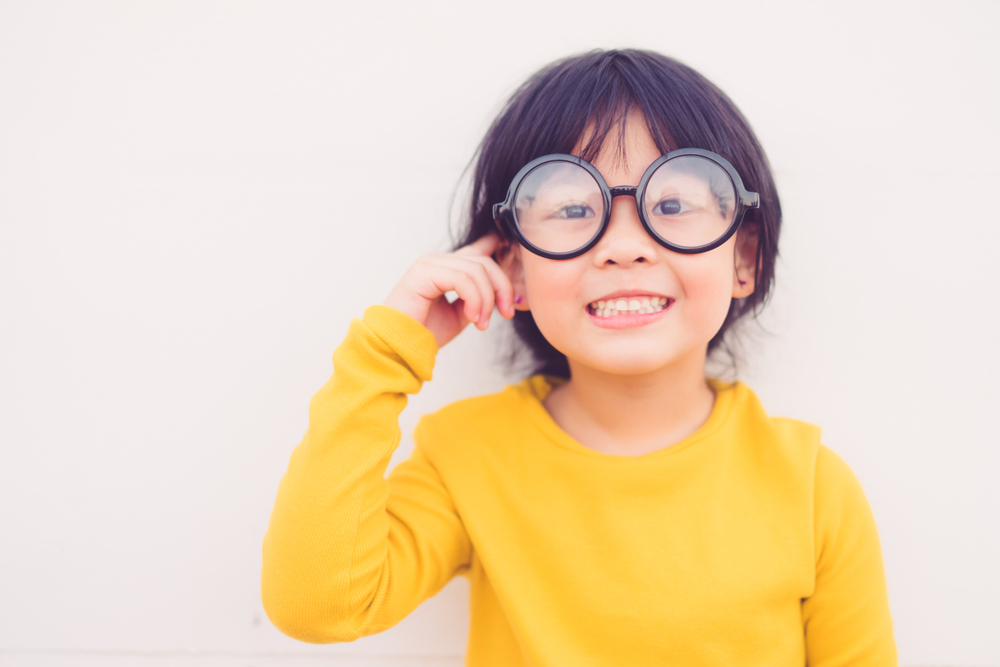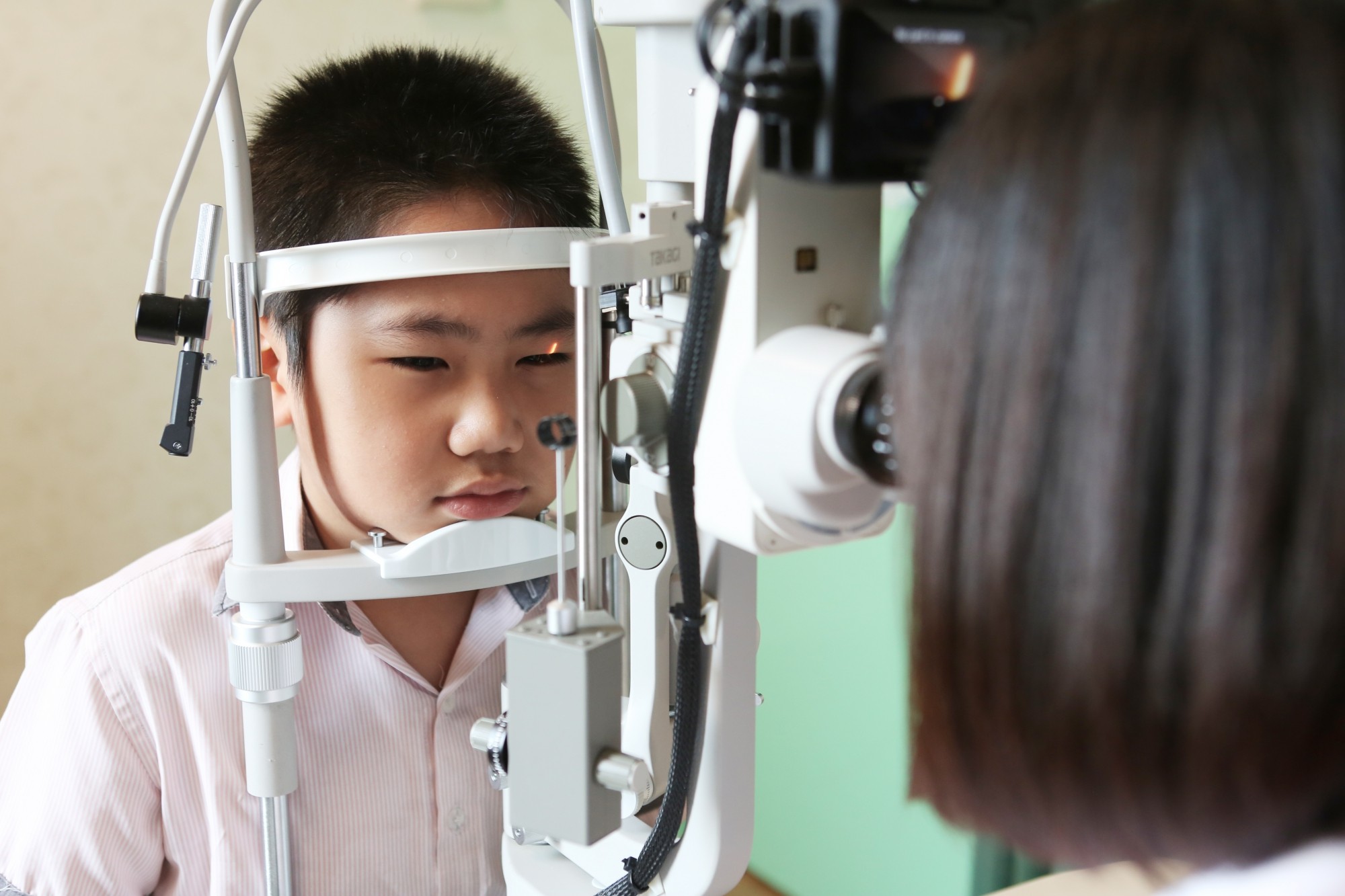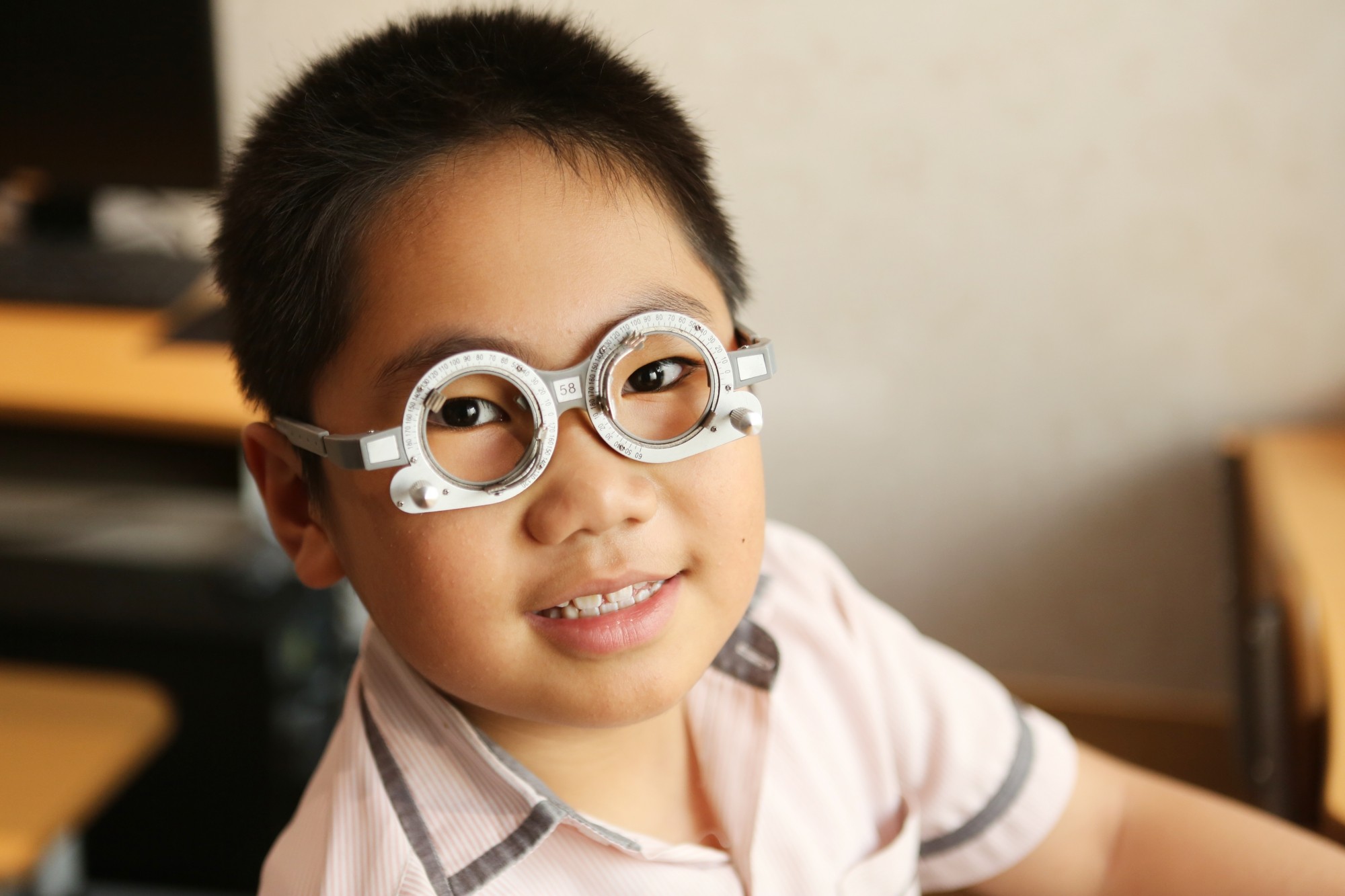
Myopia occurs when the cornea is too curved or the eyeball's axis is too long, or both, causing light to focus in front of the retina instead of on the retina as usual. Factors that can increase your risk of nearsightedness include:
- Genetics: If one parent is nearsighted, the risk of their child developing myopia increases. The risk is even higher if both parents are myopia.
- Visual habits: Some studies have shown that constant working, studying at close distance, or lack of outdoor activities can increase the risk of developing myopia.
Progression of myopia in children's eyes is an inevitable process, but there are many myopia control methods. Slowing the progression of myopia is a factor that should be a concern for parents because myopia rapidly progresses can bring many inconveniences and risks to children's eyes:
- Children will have to change glasses regularly to achieve maximum vision.
- High myopia increases the risk of other serious eye problems such as strabismus, amblyopia, retinal degeneration, cataracts, macular degeneration, and retinal detachment.
- Severe myopia may make children limited in choosing surgical methods to treat refractive errors when they reach adulthood.

1. Orthokeratology (Ortho-K)
Orthokeratology is the temporary reduction of myopia achieved by the programmed application of contact lenses to reshape the cornea at night at bedtime (average 6-8 hours per night) and take it off when you wake up the next morning. Children will get clear vision during the day without glasses or contact lenses. Ortho-K is highly recommended by ophthalmologists for its effectiveness in slowing the progression of myopia.
When using Ortho-K lenses, parents need to guide their children on how to put on and remove the lenses and how to keep them clean to ensure safety and maximum effectiveness.
Atropine 0.01% eye drops are prescribed by doctors for children with myopia between the ages of 6 and 15, with at least 0.5 diopters of myopia and rapid progression of myopia. Research shows that myopia in children from 6-12 years old slows down by 50% over 2 years of treatment. Atropine 0.01% is a prescription eye drop, only used when prescribed by a doctor with the dosage, time, and method of use according to specific instructions. Therefore, parents should not give Atropine 0.01% to children without consultation from a doctor.
Children are recommended to use Atropine 0.01% for a long time (at least 2 years), use it properly, and visit for follow-up as scheduled to achieve the best result of myopia control. When using Atropine 0.01%, the child may have slightly blurred vision at close range in the morning due to pupil dilation, but this side effect will disappear about 1-2 hours after waking up.
4. Wearing the correct glasses
Contrary to the concept of wearing glasses with lower power can help to reduce myopia, the fact is that wearing the right glasses is a good solution for the eyes. However, this does not guarantee good distance vision for children, forcing the eyes to work harder. Therefore, according to ophthalmologists, wearing glasses with the correct number will bring the maximum effect in terms of improving vision, and also help to control myopia progression. This is an easy-to-use solution, but mono-focal lenses can cause diffraction, especially with high myopia, causing images at the edges to be less clear.
- Less time focusing on near objects and using digital devices, follow the 20:20:20 rule (every 20 minutes spent using a screen; try to look away at something that is 20 feet away for a total of 20 seconds).
- The study table should be located near the window to receive natural light. Seat heights and table heights are suitable for the student's age. Screens or reading material should be directly in front of them, about an arm's length away, and at eye level to avoid looking down too much
- Spending at least 2 hours a day outdoors will help enhance distance vision. Moreover, seeing in natural light conditions not only inhibits the development of myopia, but also prevents myopia in children.

Experienced Doctor
Our doctors have many years of experience in examining and treating refractive errors.
Various Types of Myopia Control
The Japan International Eye Hospital offers a variety of methods to slow down the progression of myopia. Methods are suitable for each age and refraction level of children, helping children maintain stable myopia in childhood.
Great treatment plan
The strict pre- and post-operative examination and monitoring procedures according to Japanese standards help accurately assess the condition and progression of myopia. The treatment plan is well thought-out to ensure maximum effectiveness.

